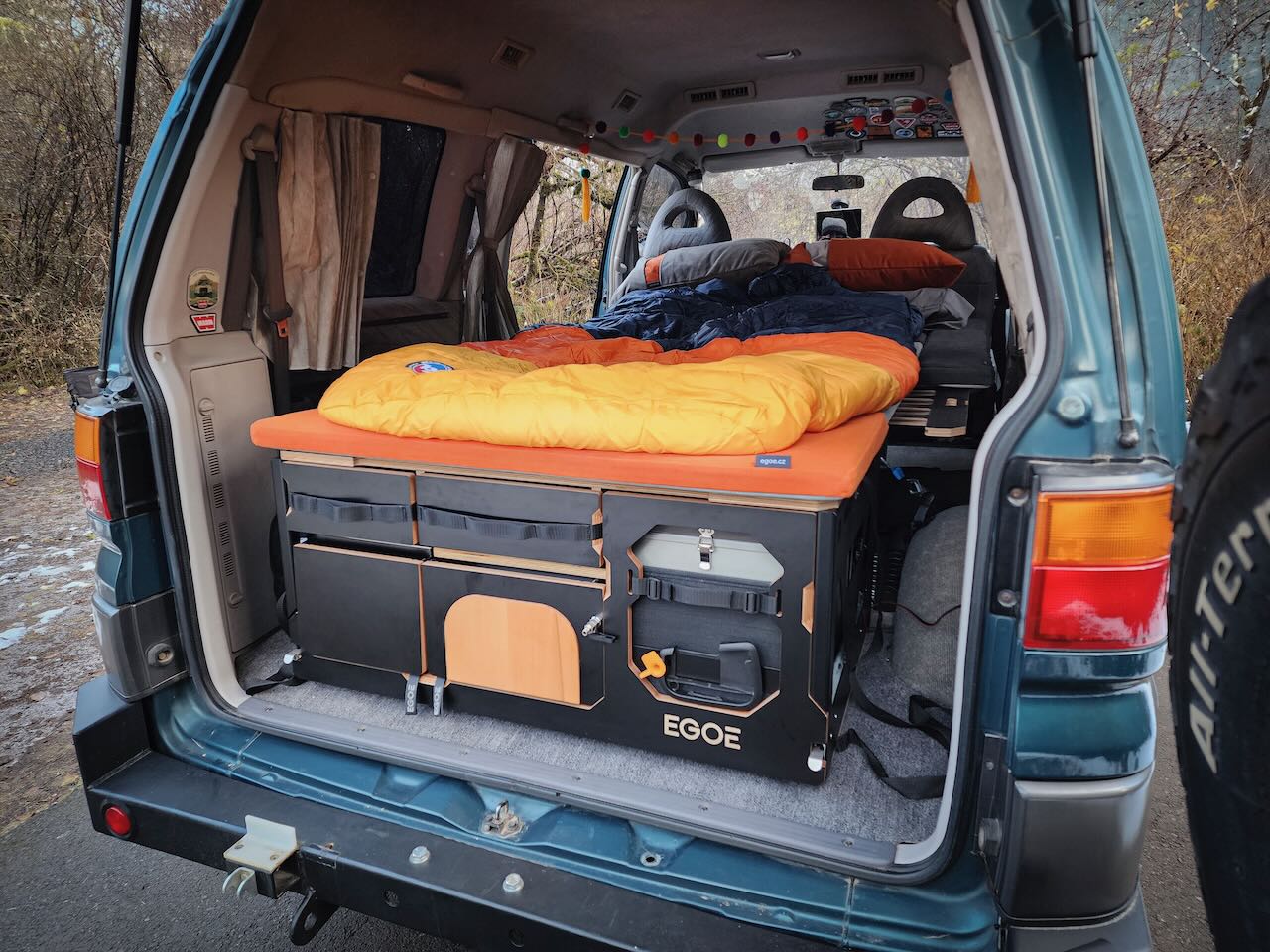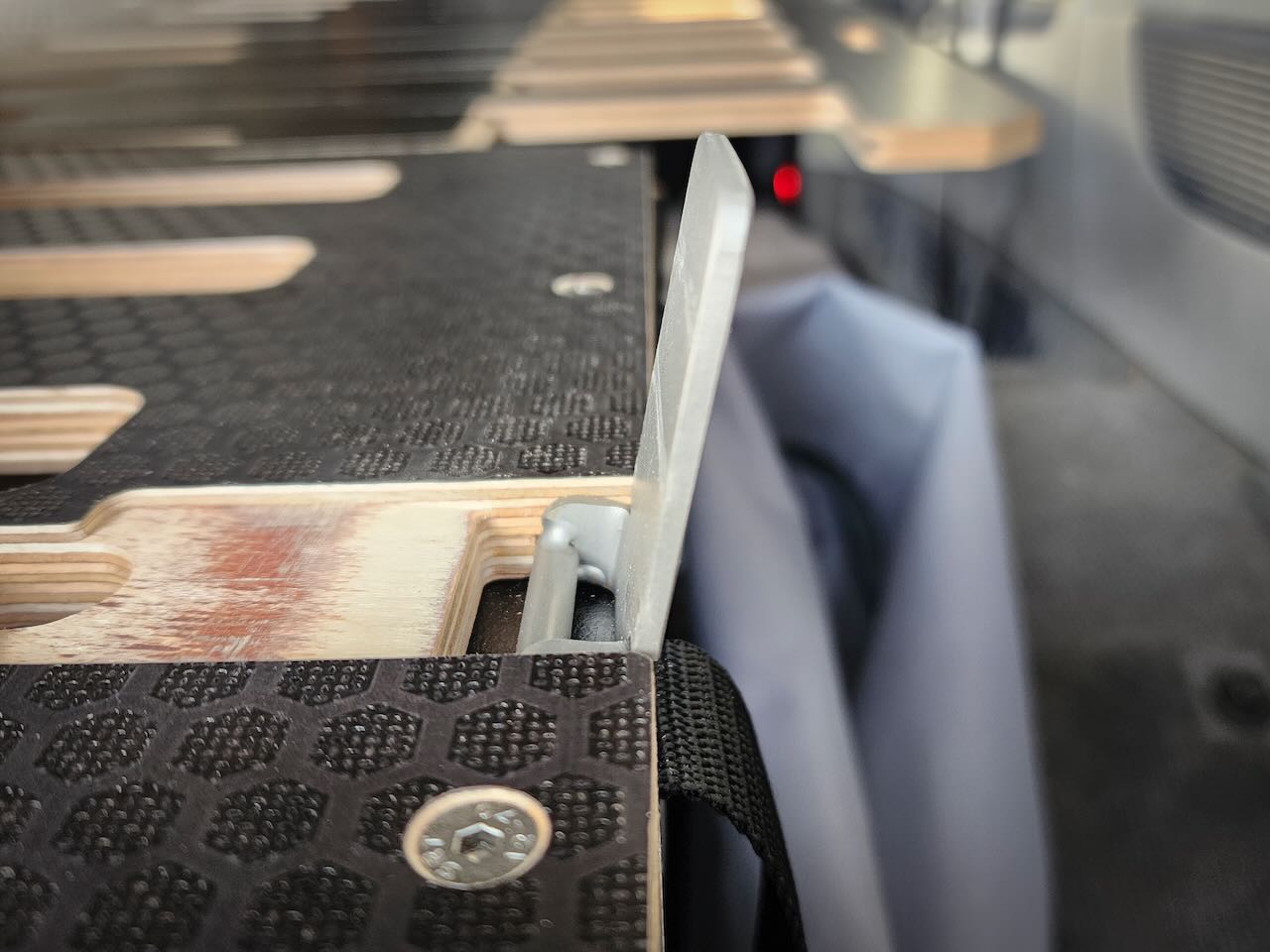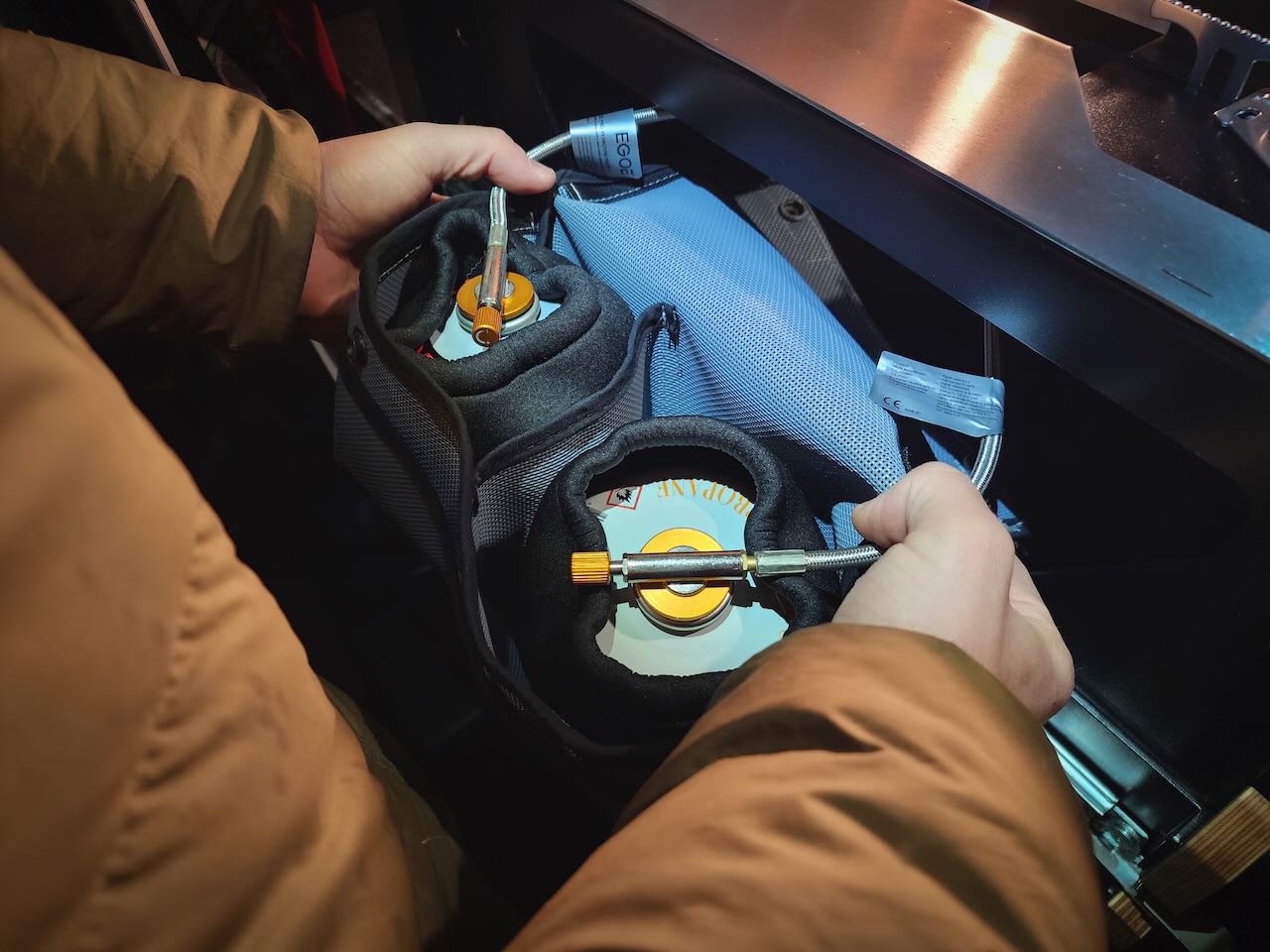Our 1994 Mitsubishi Delica Space Gear van recently got its first major interior upgrade: an Egoé Nestbox Supertramp camping setup. This compact, smartly designed product provides storage, sleeping, cooking, and washing solutions for on-the-go travelers who use their vehicles as people carriers, off-roaders, cargo haulers, and more. Why choose an Egoé Nestbox Supertramp over built-in campervan conversions or other off-the-shelf camper setups? The Egoé Nestbox unit is a lightweight floating camping system that folds into a compact cube. It can easily be removed, making it ideal for those who use their vehicles for various activities—not just camping.
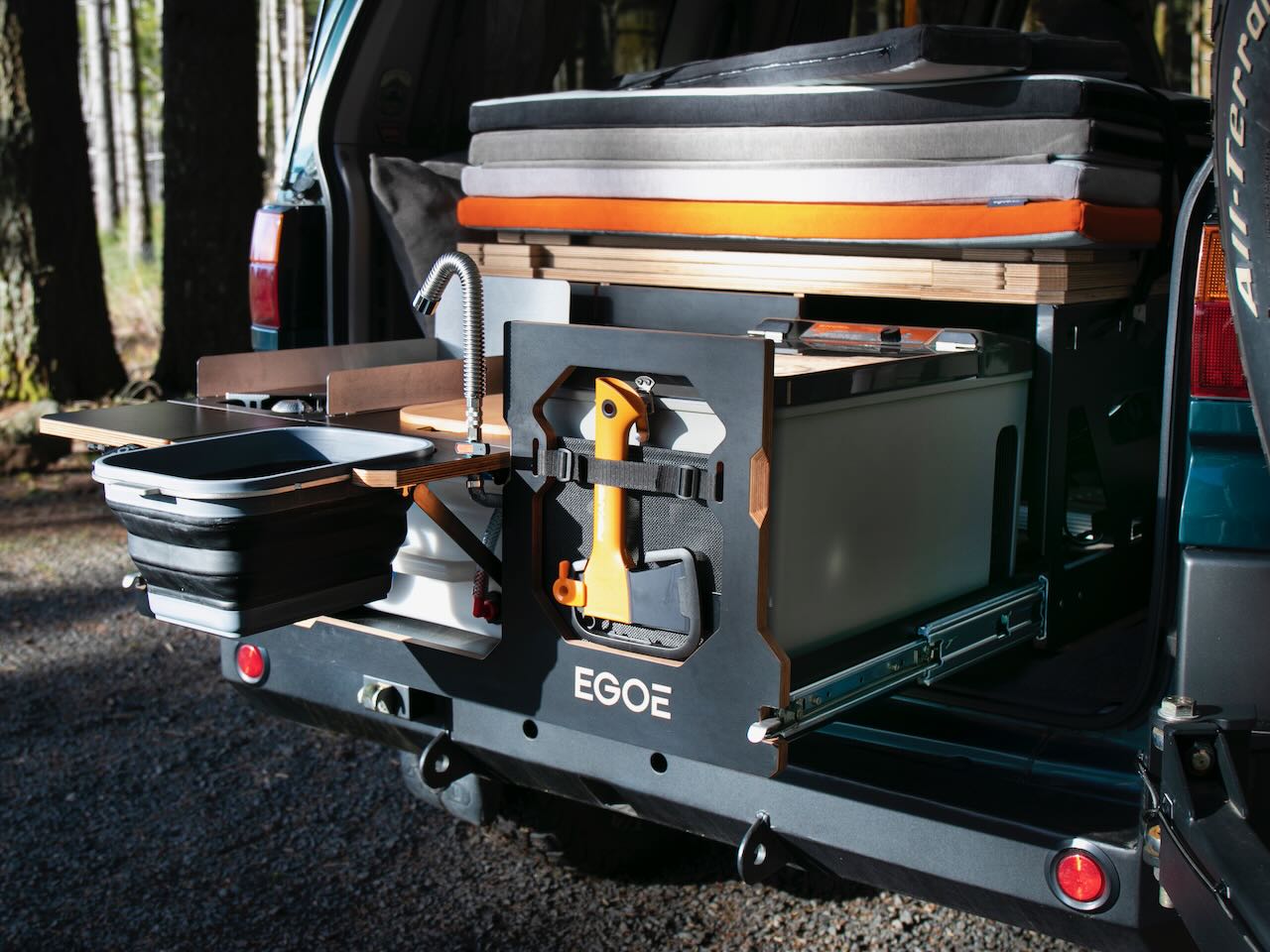
The Egoé Nestbox Supertramp checked off an impossibly long list of necessities that previously prevented us from purchasing a modular camping setup. Our van tackles cross-country road trips and off-road trail duties, but it also hauls massive amounts of cargo.
We needed our van’s cargo space as much as we wanted a bed, sink, and stove. We didn’t want to bore holes into its floor or rip out carpeting. We tried to keep our van’s interior stock and in usable condition. We didn’t want to modify it; we wanted to enhance it.
The New Kid in Town
Many off-the-shelf camper or storage systems are heavy and not easily removed once installed. Lots of them are permanently secured with bolts or don’t allow for enough cargo room after setup. Custom camper setups are expensive (we had a quote of nearly $20,000 for our van), and we didn’t have the time, space, or tools to construct a durable one of our own.
For some time, we used a haphazard (and very temporary) hinged bed platform that my husband, Andy, put together using recycled wood from our scrap pile. But then I bumped into Egoé at the Overland Expo West show and checked out their new Nestbox camping setups.

Egoé’s Nestbox camper units aren’t permanently affixed to a vehicle’s floor. No mods are necessary. Instead, they use load-rated heavy-duty straps and existing vehicle tie-down points to secure the load. The bed folds neatly on top of the cook/wash/storage box when not in use. It also allows ample storage underneath it when laid out.
About Egoé
Egoé is a Czechia-based company and is well-known in Europe. They manufacture high-end modern outdoor furniture and transportation structures of all shapes and sizes and have decades of experience making furniture out of wood and metal.
Today, Egoé boasts multiple Nestbox systems for Jeeps, Land Rovers, Subarus, Mercedes-Benz Sprinter vans, and a plethora of other adventure rigs, with direct sales hitting North American shores starting in the summer of 2021.

Since then, Egoé North America Ltd. has sold over 70 Nestboxes. They are a relatively unknown brand in the US marketplace, and Nestboxes have been around for only a short time. With the current state of the global economy, they consider this number a success.
We spend a good deal of time off the beaten path. We opted to test Egoé’s most rugged Nestbox, the Supertramp model, to see how it’d handle our lifestyle.
The Egoé Nestbox Supertramp Low-Down
Egoé sells Nestbox camping setups in three ways: a Kitchen set, Sleeping set, or Complete set. We tested the Egoé Nestbox Supertramp Complete set. It includes a removable two-burner stove module, a sink/wash basin zone with a 4-gallon water vessel, two drawers with additional storage cubbies, and an optional 12-volt Engel MD17F fridge/freezer that stows in the main Nestbox cube. A set of rectangular Nestpillows stack against it. As a finishing touch, Egoé adds an extra-sharp Fiskers axe to the kit.
A collapsible bed frame, folding foam bed mattress, and two Velcro side bolsters neatly stack on top. This creates a cornucopia of colorful high-quality fabric, birch plywood, and metal accents.
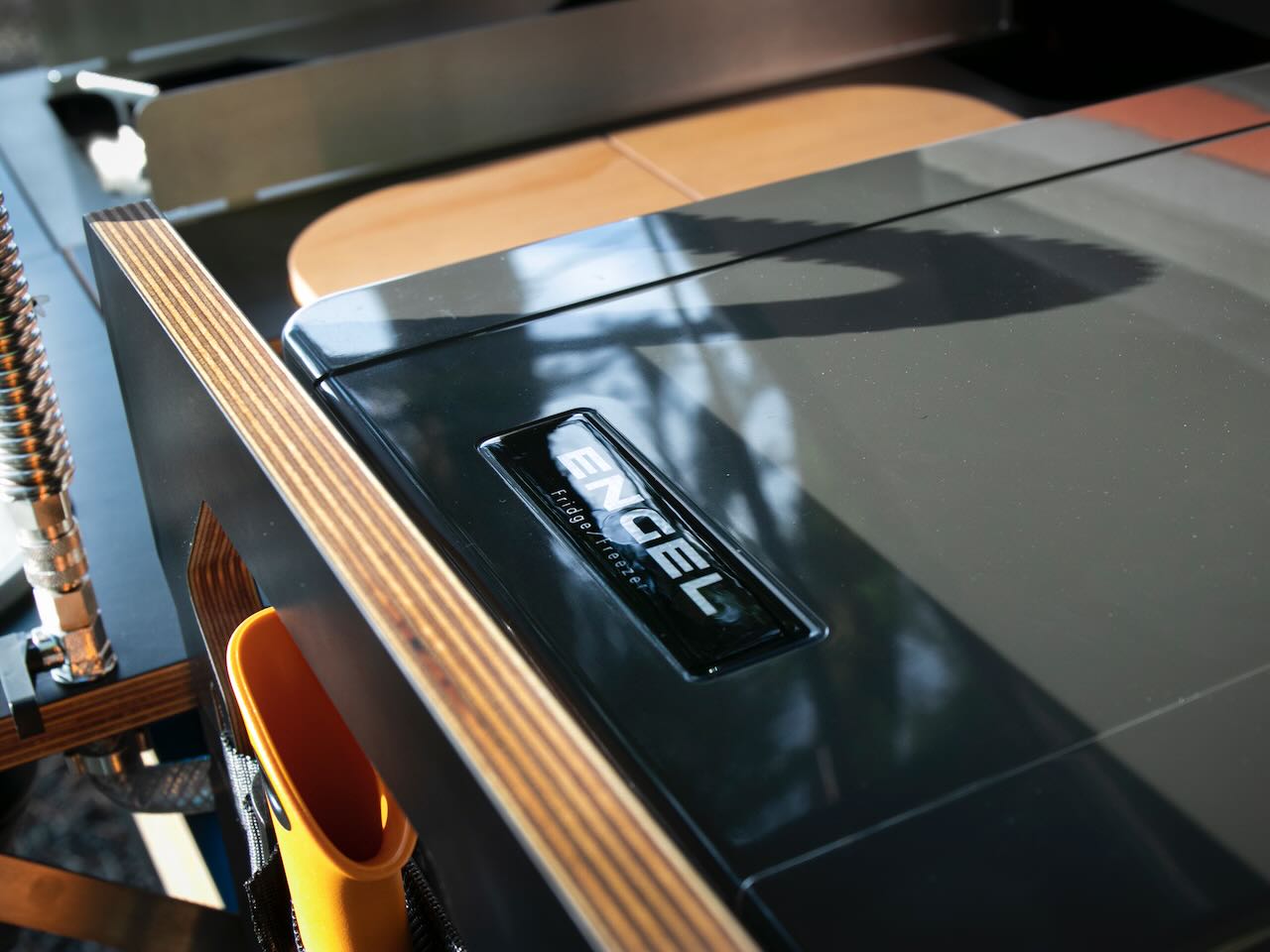
The Supertramp base unit (with stove, wash unit, and fridge removed) weighs approximately 110 pounds. Once each module is put into place (including the fridge) and hooked up, the fully functional, adventure-ready camping setup adds about 170 pounds to a vehicle.
Petr Kovařík, Egoé’s U.S. sales manager, mentioned nearly everything is manufactured in Europe, except for the collapsible sink.
Egoé Nestbox Supertramp Materials
Egoé uses premium and commercial-grade materials for the Supertramp. Where other Nestbox frames are mainly plywood, the ruggedized Supertramp includes aluminum sides, making it lighter and more stable on rough roads. From the precision-routed birch plywood to Egoé emblazoned drawer pulls, each element of the Nestbox Supertramp is thoughtfully considered and easy to use.
The Nestbox comes in a few colorways. However, the matte-black high-pressure laminate (HPL) on our tester shows grease and smudges quickly and can be challenging to clean. On the other hand, HPL is commonly used for countertops and other high-traffic areas. It’s impact and scratch resistant and is impervious to moisture.
Cooking and Washing
The Egoé Nestbox Supertramp has a powerful, portable two-burner stove unit that uses two standard screw-on fuel canisters (think Snow Peak GigaPower fuel, MSR, etc.). The stove compartment can be used in the Nestbox or taken out for tableside cooking. Furthermore, each burner can be removed from the stove assembly and used for hiking, making this stove module a remarkable bit of kit.
Each stove burner has a separate control valve and fuel koozie that neatly fits below the burner. Three stainless steel windscreen panels also stow below the setup in a slim cubby that can house items like a long lighter, spices, and other accoutrements. Note: These burners don’t have built-in ignitors.
It’s helpful to have a table nearby for cooking/washing duties; there isn’t much room to use the Nestbox for these tasks. We used the fridge top as a shelf and occasionally employed the bed top for temporary cook-time storage. We’d like a same-sized shelf accessory to spare the fridge top from wear.
Although the fridge is modest in size, it’s adequate for weekend jaunts if you’re careful with grocery planning. Its front-mounted latch is close to the axe handle, making it somewhat difficult to open. A different axe orientation might help this.
The wash station is small but a cinch to set up and use. Simply remove the cutting board and replace it with the expanded sink basin, affix the faucet to its base, and turn it on. A built-in sensor shuts the pump off after the sink shelf is lowered.
Water splashes outside the sink basin should be swiftly dried—long-term neglect of this could potentially leach into the plywood, degrading the surrounding area. This potential issue could be avoided if a different material was used around the sink.
The Stash-and-Dash Egoé Bed
Not only does the Egoé Nestbox Supertramp Complete set come with the floating camping cube, but it also has a slick sleeping platform. The main Nestbox keeps the three-piece bed top, folding mattress, and side bolsters stowed until deployed. A zippered bag houses the frame and bed legs. Note: Two metal side flanges keep the bed platform units atop the Nestbox when not in use. However, they aren’t vertical and the boards sometimes shift slightly out of place when off-roading.
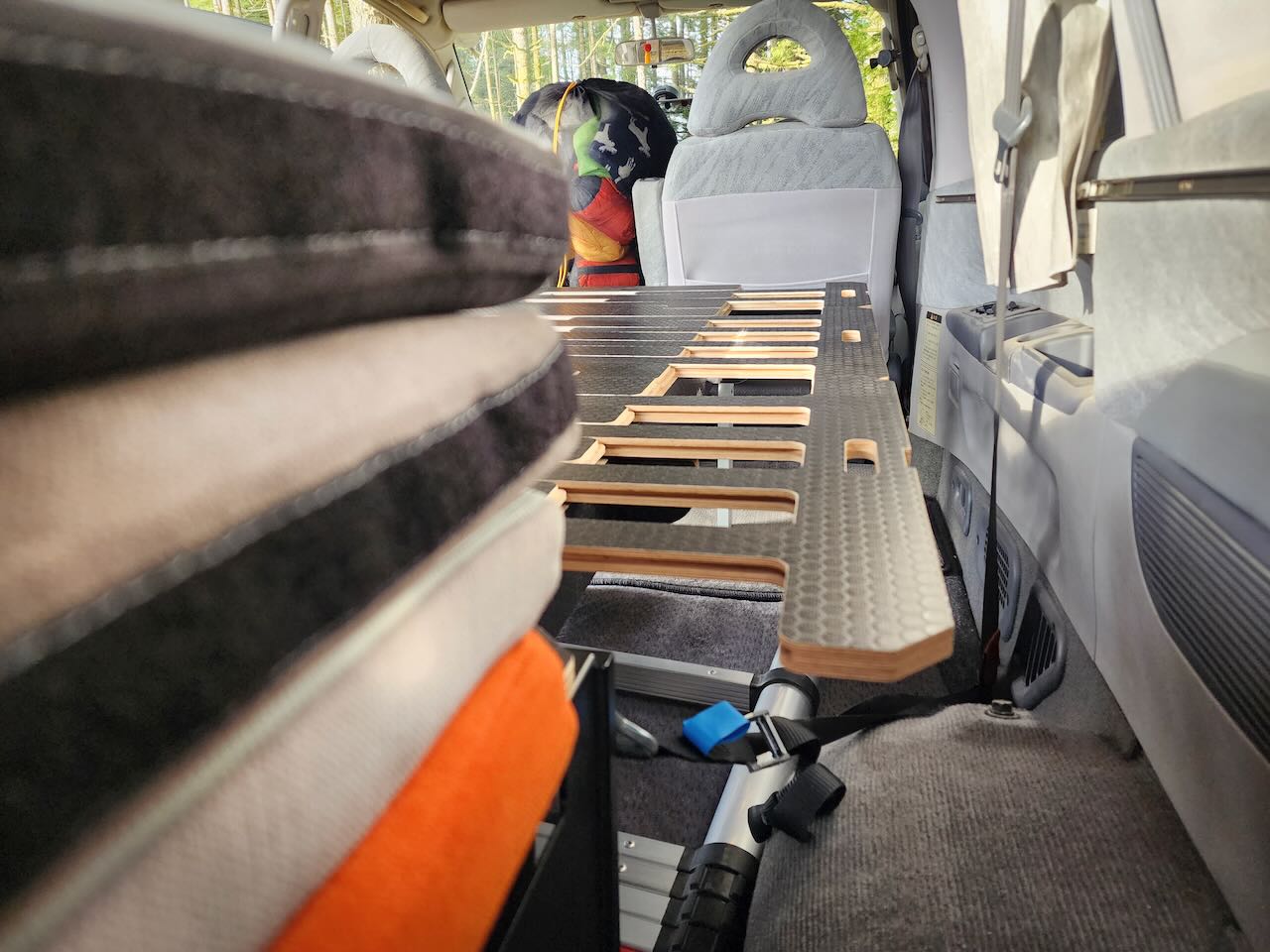
Setting up the bed isn’t initially as intuitive as one may think. However, it’s sturdy once occupied. The legs are height adjustable, and once assembled, the bed has side “winglets” that slide out to accommodate your vehicle’s width. The process goes like this:
- Fold the rear seats down (in our case, we removed the middle and rear seats for cargo-hauling abilities)
- Assemble the bed frame and legs using wooden pegs
- Lay the three bed platform sheets atop it and pull out the side winglets
- Unfold the mattress and attach the side bolsters
Tip: If you have a side-entry vehicle like our van, do not pull the door-side winglets out before getting into bed, or you could damage them. Once opened, they’re cantilevered and not supported from below. Additionally, the bed system’s tolerances are tight; care should be taken when assembling the unit.
The Nestbox Supertramp bed is 73.6 inches long and 38.2 inches wide, expanding to 50 inches in width for only the top three-quarters of the bed with both sides expanded. The foam mattress and side bolsters are approximately 2 inches thick and are on the firm side. We’d prefer the entire bed to be expandable. However, once we settled into our double-wide sleeping bag, we didn’t notice the lack of foot-side bed space. The bed was sturdy and functional and gave us solid sleep.
The Final Verdict
Egoé’s extensive history as a high-end outdoor furniture manufacturer came into play when designing the Nestbox Supertramp. They paid careful attention to size and weight, design aesthetics, and user functionality—tricky things to master when packing multiple camp duties into a compact, modular, floating system.
Not only can you cook, clean, store, and sleep using the Supertramp, you don’t have to modify your vehicle to install it. You can remove it to carry extra passengers or haul cargo.
The Supertramp starts at $5,889. Our fully equipped system (with an optional Engel fridge/freezer and two Nestpillows) is under $7,000. This is nearly three times less than what we were quoted for a basic interior build-out, which would have deleted the Mitsubishi’s cargo-carrying ability.
The Egoé Nestbox Supertramp is a modular, modern, and practical solution. It’s a lightweight and easy camping setup that’ll transform a wide array of passenger vehicles into adventure-ready ones in minutes.
Test vehicle: 1994 Mitsubishi Delica Space Gear
Test product: Egoé Nestbox Supertramp Complete set
Base unit (without refrigerator): approximately 110 pounds
Complete unit (including refrigerator): about 170 pounds
$5,899 and up | egoe-nest.eu/us-en/
Images: Mercedes Lilienthal
Disclaimer
Egoé sent us this unit for review purposes. We were not paid for this review, and our results are displayed honestly and without influence.
Our No Compromise Clause: We carefully screen all contributors to ensure they are independent and impartial. We never have and never will accept advertorial, and we do not allow advertising to influence our product or destination reviews.


